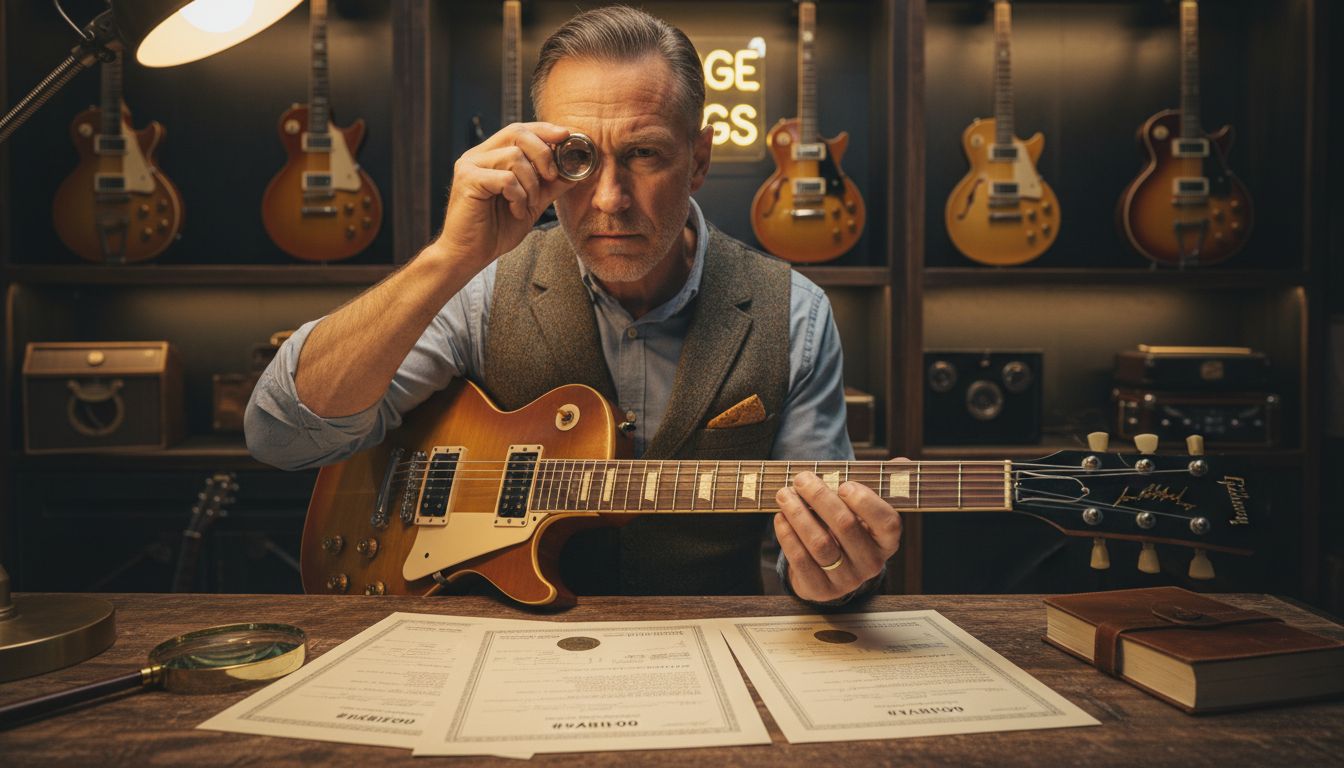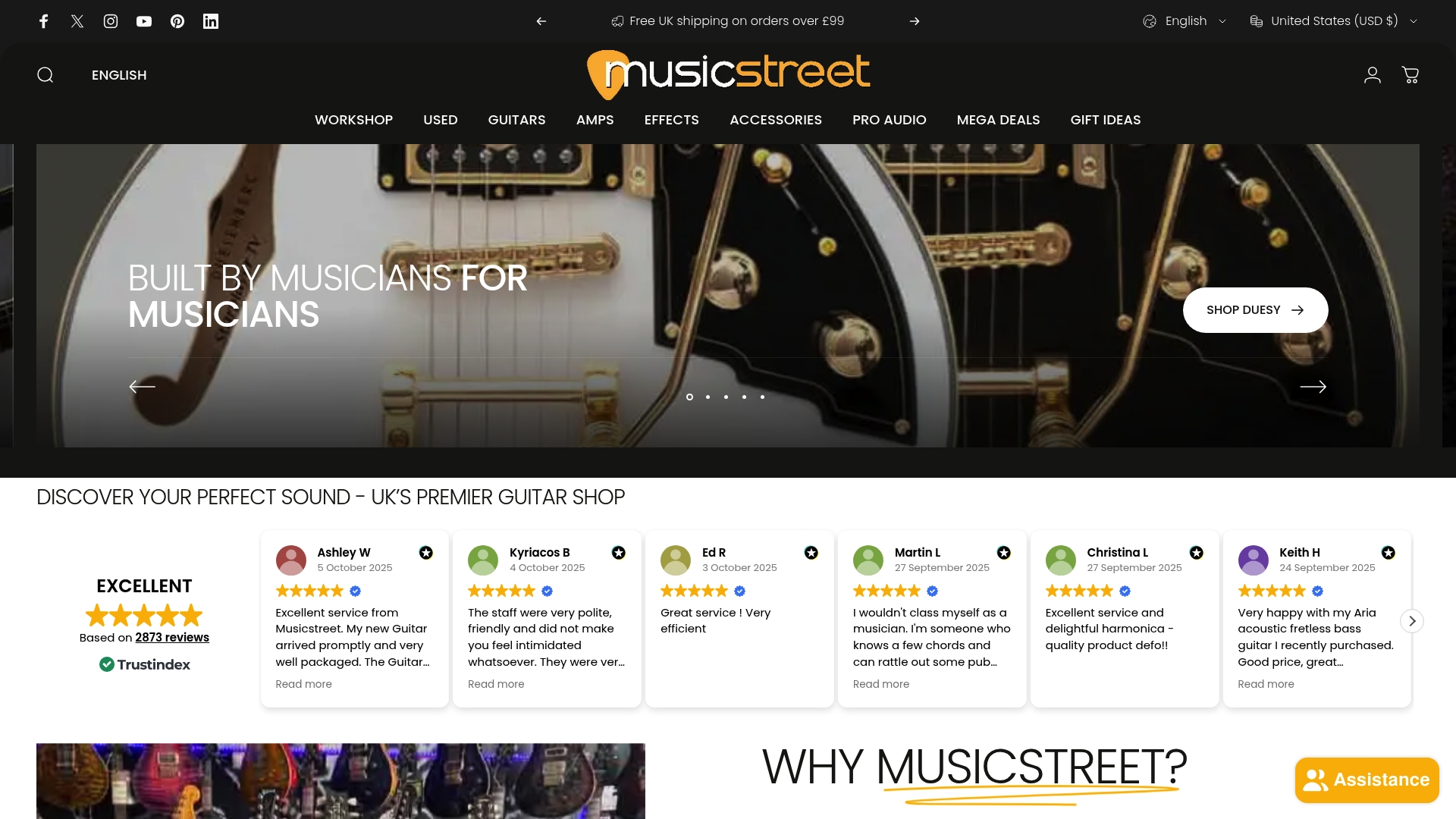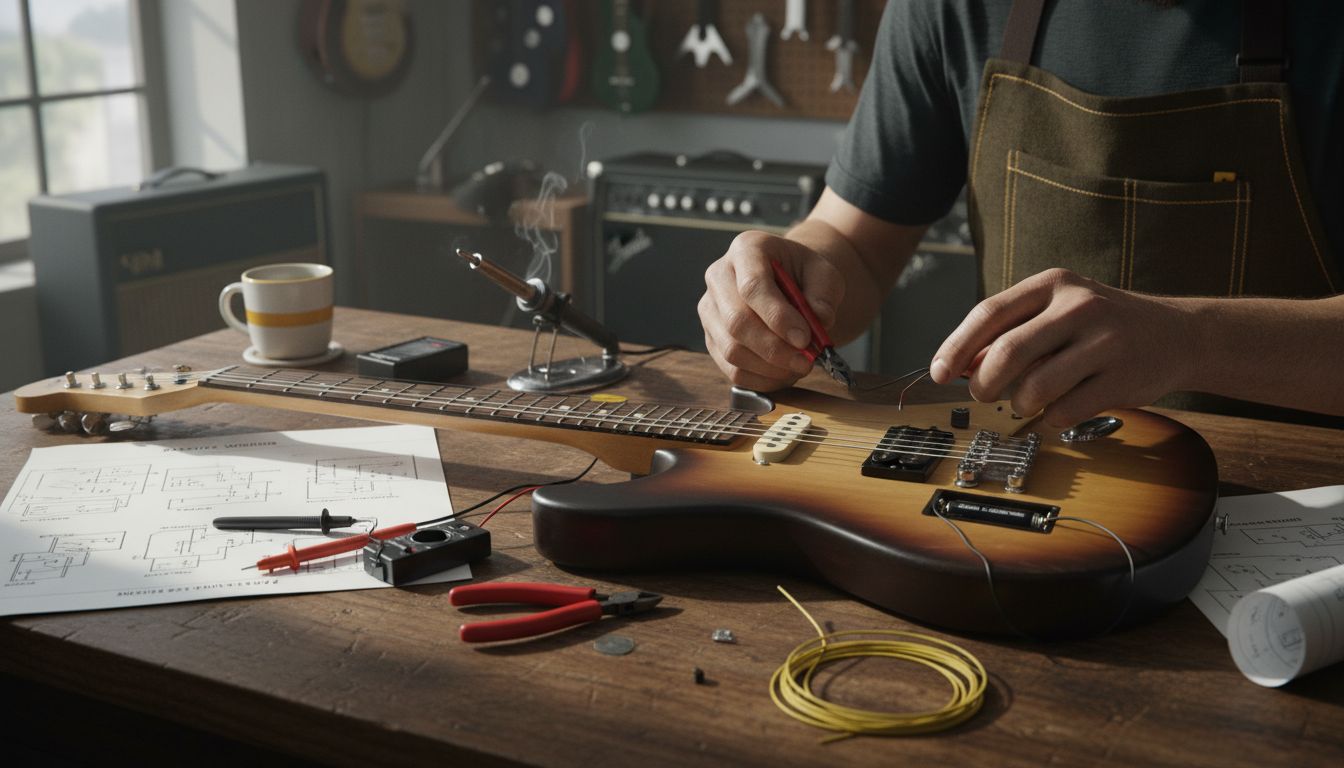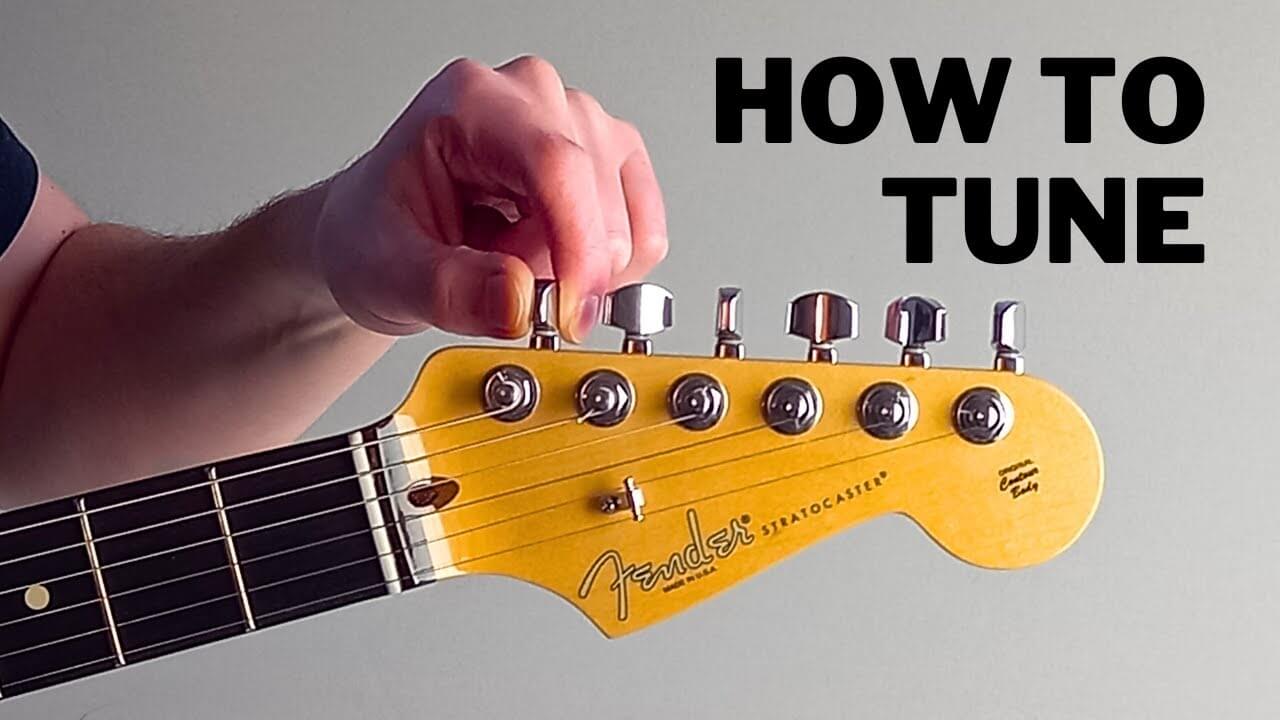More than 1.5 million guitars are sold worldwide every year, yet many buyers struggle to make a satisfying investment. Choosing the right guitar is not just about sound or style. You need to align your purchase with your goals and budget, while considering long-term value and potential returns. Whether you’re a passionate collector or a musician planning your next step, understanding the key steps in guitar investment can save you money and frustration.
Table of Contents
- Step 1: Assess Your Musical Goals And Budget
- Step 2: Research Guitar Brands And Model Value
- Step 3: Evaluate Condition, Authenticity, And Provenance
- Step 4: Compare Market Prices And Investment Potential
- Step 5: Verify Quality With Expert Inspection
Quick Summary
| Key Point | Explanation |
|---|---|
| 1. Set Clear Musical Goals and Budget | Define what you want from the guitar and how much you can spend. This guides your choice between professional and hobbyist instruments. |
| 2. Research Guitar Brands and Models | Investigate the reputation and potential value of guitar brands. Legacy brands often hold consistent value due to their history. |
| 3. Evaluate the Guitar’s Condition and Authenticity | Check for original features and authenticity documentation. This is crucial for determining the instrument’s true market worth. |
| 4. Compare Prices and Market Trends | Analyze price variations and trends across platforms. Understanding market dynamics helps identify promising investment opportunities. |
| 5. Seek Expert Inspection Before Purchase | Have a professional assess the guitar’s quality and condition. They can provide important insights about the instrument’s long-term value. |
Step 1: Assess Your Musical Goals and Budget
Investing in a guitar requires thoughtful evaluation of your musical aspirations and financial parameters. This initial step will help you make an informed decision that balances your creative ambitions with practical financial considerations.
According to music.org, musicians should set specific income targets and develop strategies to support their musical journey. When assessing your musical goals, consider whether you are seeking a guitar for professional performance, recording, teaching, or personal enjoyment. Each objective will influence your budget and instrument selection. Professional musicians might require higher end instruments, while hobbyists could focus on more affordable options.
Your budget should reflect not just the guitar’s purchase price, but also potential additional costs like accessories, maintenance, and potential upgrades. 92ny.org recommends consulting experts to ensure the guitar fits your physical requirements and playing style. A guitar that feels comfortable and matches your skill level will provide better long term value.
Pro tip: Start by setting a realistic budget range that allows for quality without financial strain. Consider allocating 10 20% above your initial budget for potential unexpected expenses or premium features that might enhance your musical experience.
Step 2: Research Guitar Brands and Model Value
Researching guitar brands and understanding their market value is a critical step in making an intelligent investment. This process involves exploring the reputation, craftsmanship, and potential appreciation of different guitar models.
Guitarbrands.org highlights the complexity of the guitar market, noting the significant differences between legacy brands like Martin and Taylor and emerging boutique manufacturers. When researching brands, consider factors beyond just their current reputation. Legacy brands often hold consistent value due to their established history and quality standards.
Accountinginsights.org suggests examining specific models with potential investment value. Look for guitars associated with legendary musicians or those from limited production runs. High value models like Gibson Les Paul or Fender Stratocaster represent more than instruments they are cultural artifacts with potential long term financial appreciation.
Pro tip: While researching, create a spreadsheet tracking key details like original price, current market value, production year, and unique characteristics. This systematic approach will help you make a more informed investment decision. For additional insights, check out our guide to guitar brands from budget to premium to understand the nuanced landscape of guitar investments.
Step 3: Evaluate Condition, Authenticity, and Provenance
Evaluating a guitar’s condition, authenticity, and provenance is crucial for making an informed investment. This step involves a detailed examination that goes beyond surface level appearance and requires careful investigation of the instrument’s history and physical characteristics.
Assocsia.org underscores the significant impact of condition and authenticity on market valuation. When assessing a guitar, look for signs of original construction, original hardware, and minimal repairs. Pay close attention to wear patterns that indicate genuine use versus damage. Original finish, matching serial numbers, and documentation can dramatically influence the instrument’s investment potential.

Accountinginsights.org emphasizes the importance of craftsmanship and the luthier’s reputation in determining an instrument’s value. Expert authentication becomes critical, especially for vintage or limited edition guitars. Consider consulting professional appraisers or experienced collectors who can provide nuanced insights into the instrument’s true market worth.
Pro tip: Always request comprehensive documentation including original purchase receipts, service records, and authentication certificates. When possible, obtain a professional written appraisal to validate the guitar’s condition and potential investment value. Explore our comprehensive guide to guitar authenticity for more detailed insights into evaluating musical instruments.
Step 4: Compare Market Prices and Investment Potential
Comparing market prices and assessing investment potential requires a strategic approach that goes beyond simple price comparisons. This step involves understanding the complex dynamics of guitar valuation and market trends.
Gitnux.org provides critical insights into the global guitar market, revealing intricate patterns of value appreciation. The research highlights significant variations across different guitar categories. Acoustic and electric guitars demonstrate unique market behaviors, with some models experiencing remarkable value appreciation while others remain relatively stable. Focus on tracking price trends across multiple platforms including auction sites, specialist marketplaces, and professional dealer networks.
Assocsia.org emphasizes the profound impact of external factors on guitar valuations. Economic conditions, cultural shifts, and artist associations can dramatically influence an instrument’s market worth. Vintage guitars particularly demonstrate fascinating value fluctuations, with some models experiencing substantial appreciation during specific market periods. Pay attention to guitars associated with legendary musicians or limited production runs, as these often represent the most promising investment opportunities.
Pro tip: Create a comprehensive tracking system that monitors price trends across multiple sources. Consider utilizing specialized guitar valuation databases and connecting with collector communities to gain nuanced market intelligence. Check out our guide to guitar brands from budget to premium for additional insights into strategic guitar investments.
Step 5: Verify Quality with Expert Inspection
Verifying a guitar’s quality through expert inspection is a critical step in ensuring your investment meets the highest standards of craftsmanship and performance. This process requires a comprehensive and professional assessment that goes beyond surface level evaluation.
92ny.org recommends consulting with professional guitar experts who can provide an in-depth assessment of the instrument. During an expert inspection, focus on critical aspects such as physical comfort, playability, neck alignment, fret condition, and overall structural integrity. Professional musicians and luthiers can identify subtle nuances that might escape an untrained eye such as potential structural weaknesses, signs of previous repairs, or minor imperfections that could impact the guitar’s long term value.
Assocsia.org highlights the crucial role of expert appraisal in determining an instrument’s true market value. A professional inspection involves more than just evaluating physical condition. Experts will examine the guitar’s provenance, authenticity, and historical significance. They can provide insights into potential future value appreciation and help you understand the intricate factors that contribute to a guitar’s investment potential.

Pro tip: Always request a written inspection report that details the expert’s findings, including a comprehensive evaluation of the instrument’s condition, any potential restoration needs, and an estimated market value. Our guide to guitar authenticity offers additional insights into professional instrument assessment.
Make Your Guitar Investment Smart and Secure with MusicStreet
Navigating the complex world of guitar investment can feel overwhelming when assessing authenticity, condition, and market value. If you want to avoid costly mistakes and ensure your choice aligns with your musical goals and budget, expert guidance and access to meticulously vetted instruments are essential. At MusicStreet, we understand how vital comfort, craftsmanship, and genuine provenance are to both seasoned musicians and passionate collectors.

Discover our curated selection of premium, used, and new guitars designed to meet high standards of quality and investment potential. Whether you’re looking to verify a guitar’s authenticity or find that ideal instrument supported by expert advice, our shop and online platform offer an unmatched experience. Take the next step toward making an informed and confident decision by visiting MusicStreet today. Explore our detailed guitar guides and expert services that equip you with everything you need to secure a valuable musical asset and enhance your playing journey.
Frequently Asked Questions
How do I assess my musical goals before investing in a guitar?
To assess your musical goals, identify if you need a guitar for professional performance, recording, teaching, or personal enjoyment. Write down your primary objectives and set a budget that accommodates the best instrument for those specific goals.
What factors should I consider when researching guitar brands and models?
When researching guitar brands, look for their reputation, craftsmanship, and historical significance. Create a checklist noting key characteristics such as market value, production year, and uniqueness of models that appeal to you to streamline your decision-making process.
How can I evaluate a guitar’s condition and authenticity?
Evaluate a guitar’s condition by looking for signs of original construction, such as matching serial numbers and original hardware. Request documentation like purchase receipts and service records, and consider having the guitar appraised to ensure its authenticity and investment potential.
What steps should I take to compare market prices for guitars?
Start by tracking price trends on multiple platforms, including auction sites and professional dealer networks. Create a spreadsheet to compare prices and market behavior for specific guitar models, updating it regularly for better insights on fluctuations.
Why is expert inspection important in guitar investment?
Expert inspection ensures that the guitar meets high standards for quality and craftsmanship, and it identifies potential future value appreciation. Arrange for a professional assessment to receive a detailed report on the instrument’s condition and any necessary restorations.
How can I ensure my guitar investment is financially sound?
Ensure your investment is financially sound by researching market trends and evaluating the potential appreciation of various models. Set a clear budget with a buffer for unexpected costs, potentially allocating an additional 10-20% to capture opportunities for premium features.




Share:
How to Choose Guitar Accessories for a Better Sound
Why Short Scale Guitars: Complete Guide